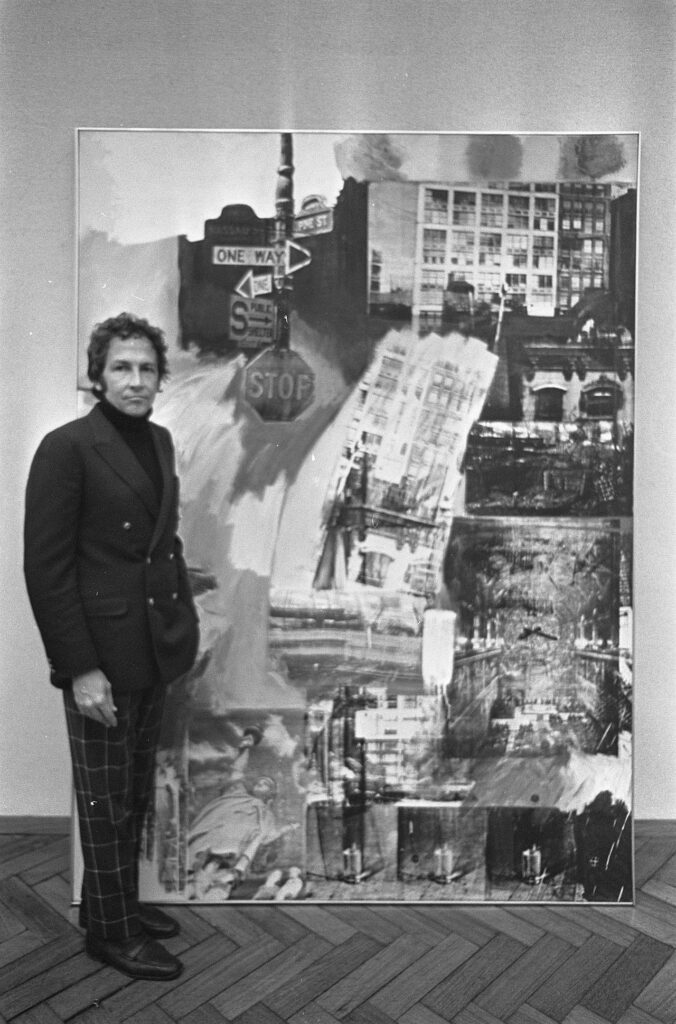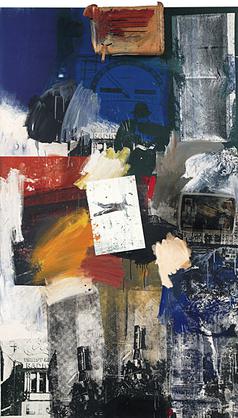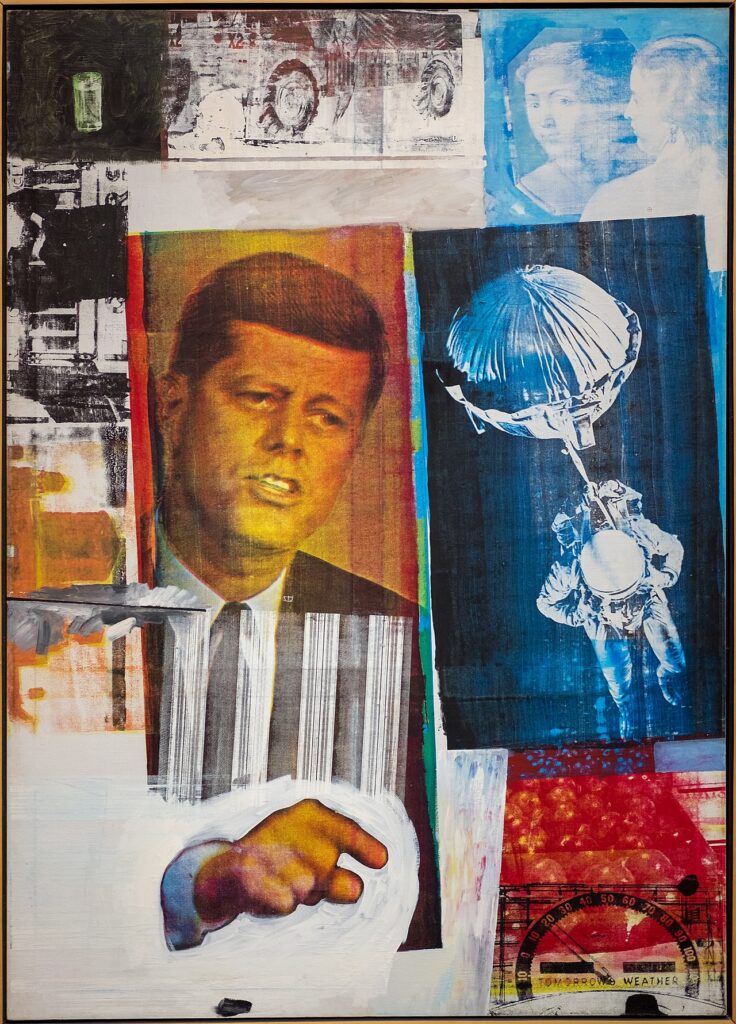Postmodernism is an intellectual stance or mode of discourse.
Postmodernists are generally “skeptical of explanations which claim to be valid for all groups, cultures, traditions, or races,” and describe truth as relative.It can be described as a reaction against attempts to explain reality in an objective manner by claiming that reality is a mental construct.Access to an unmediated reality or to objectively rational knowledge is rejected on the grounds that all interpretations are contingent on the perspective from which they are made; as such, claims to objective fact are dismissed as “naive realism.”

Rauschenberg collected discarded objects on the streets of New York City and brought them back to his studio where he integrated them into his work. He claimed he “wanted something other than what I could make myself and I wanted to use the surprise and the collectiveness and the generosity of finding surprises. So the object itself was changed by its context and therefore it became a new thing.”
Rauschenberg’s comment concerning the gap between art and life provides the departure point for an understanding of his contributions as an artist.He saw the potential beauty in almost anything; he once said, “I really feel sorry for people who think things like soap dishes or mirrors or Coke bottles are ugly, because they’re surrounded by things like that all day long, and it must make them miserable.”His Combine series endowed everyday objects with a new significance by bringing them into the context of fine art alongside traditional painting materials. The Combines eliminated the boundaries between art and sculpture so that both were present in a single work of art. While “Combines” technically refers to Rauschenberg’s work from 1954 to 1964, Rauschenberg continued to utilize everyday objects such as clothing, newspaper, urban debris, and cardboard throughout his artistic career.



